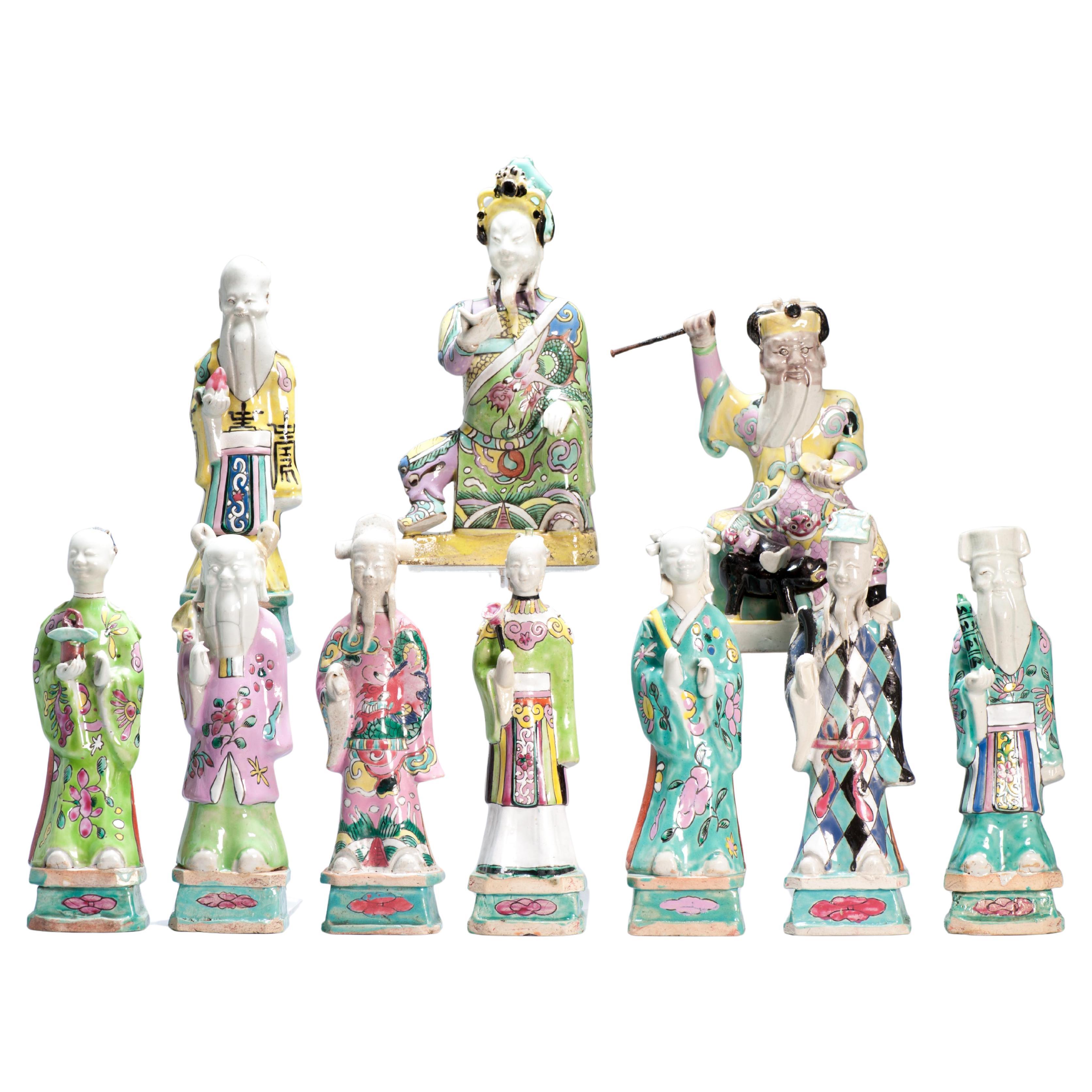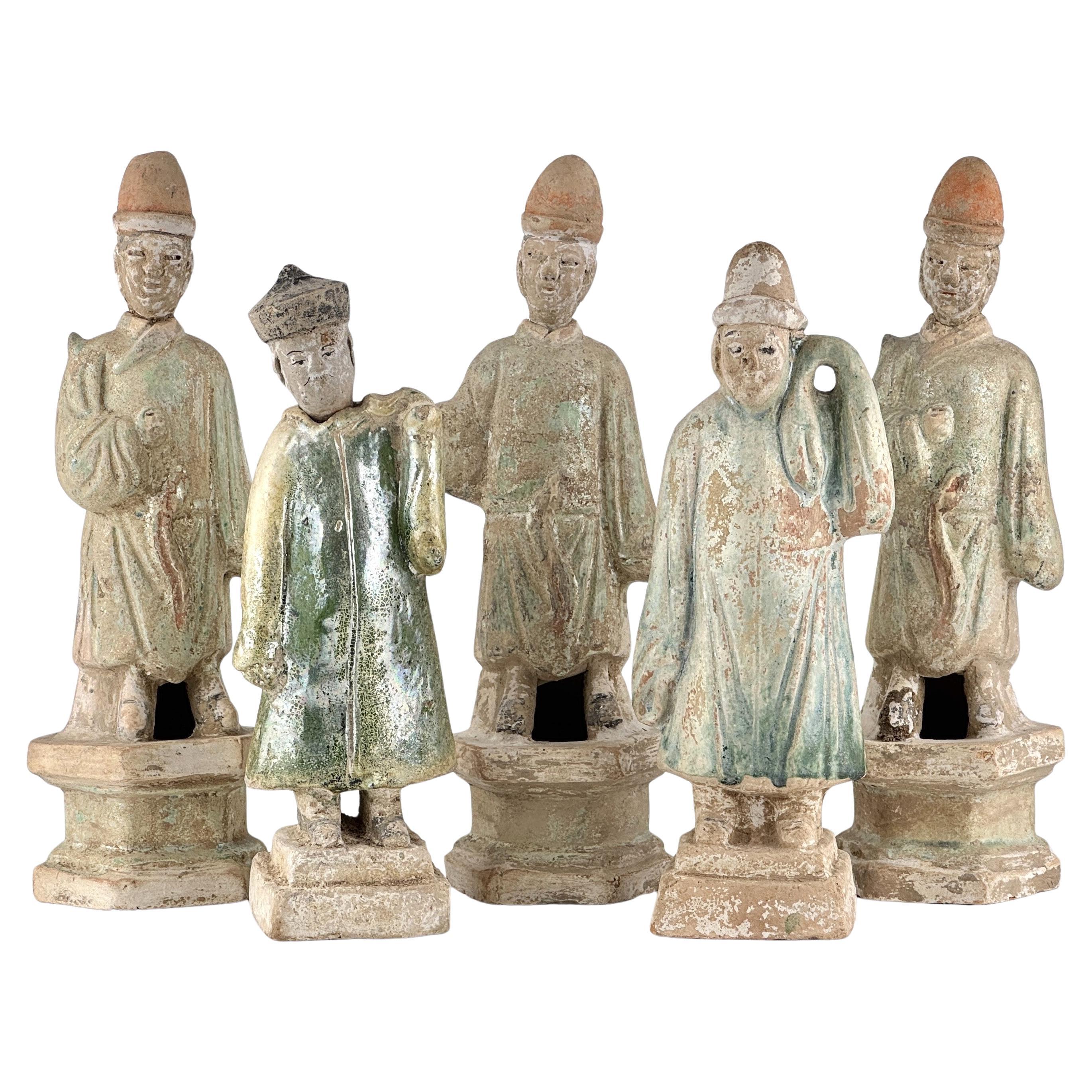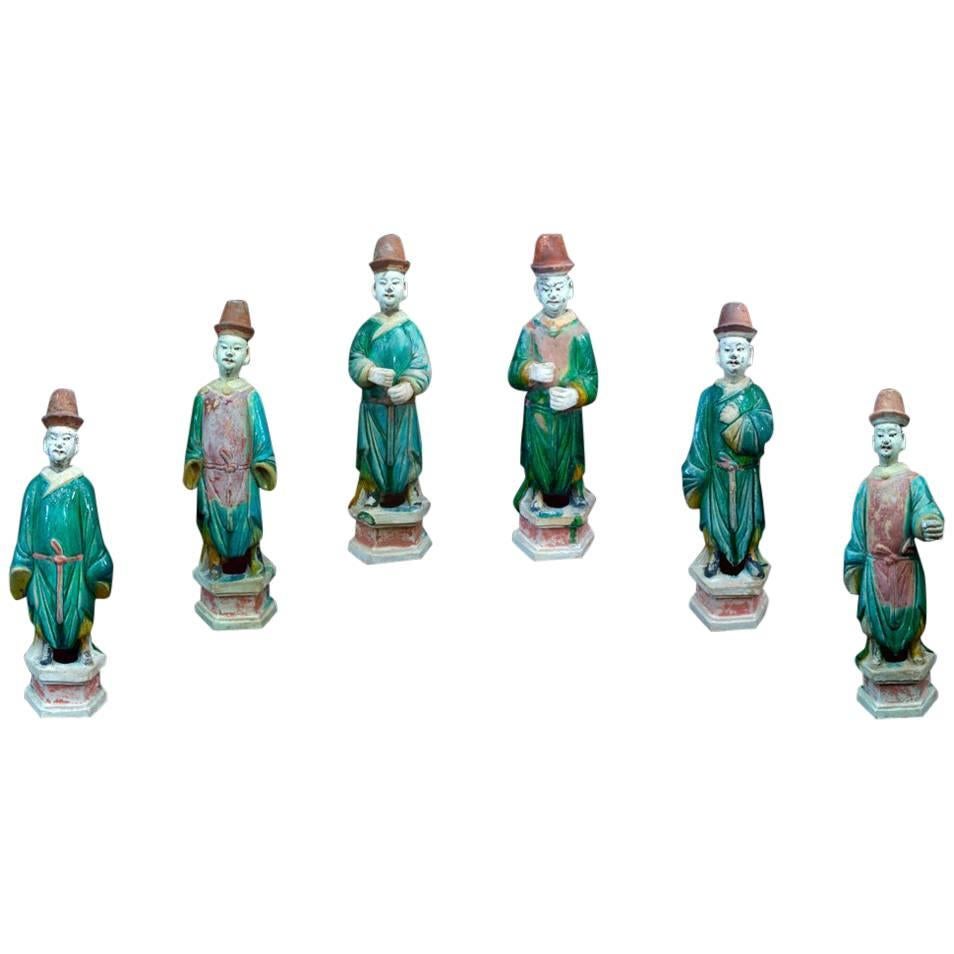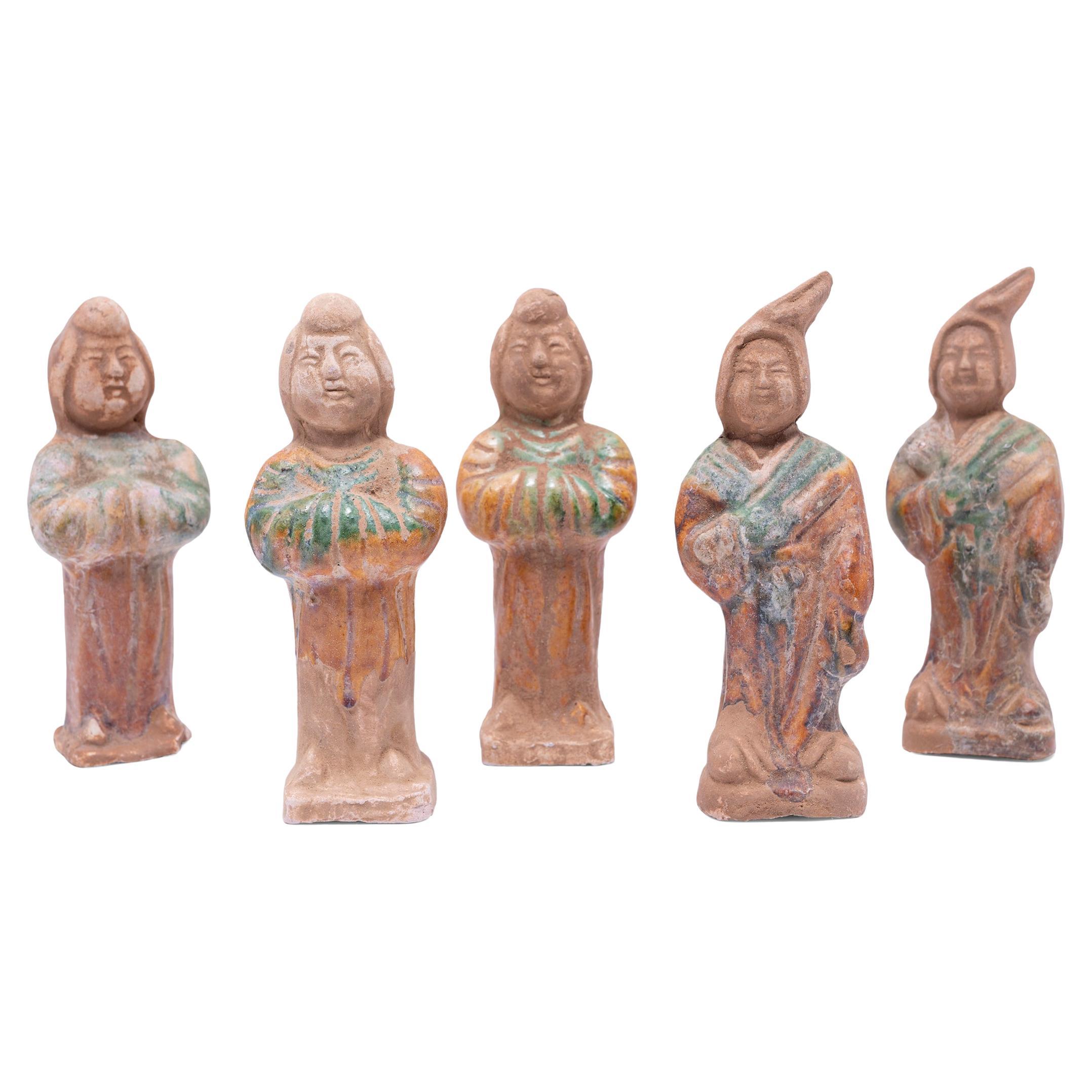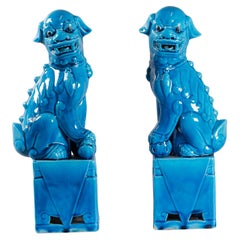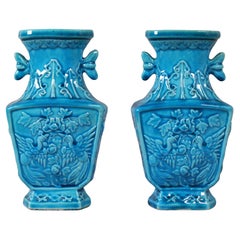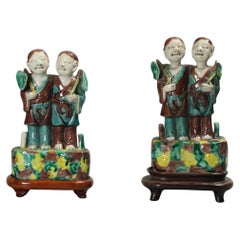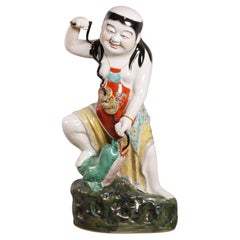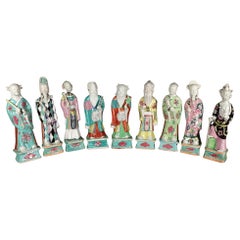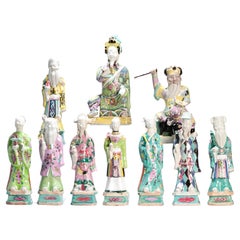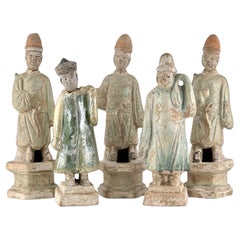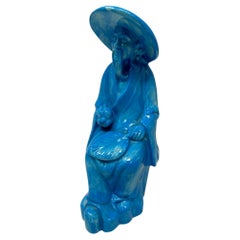Items Similar to set of 8 Chinese turquoise glazed porcelain immortals, 19th c.
Want more images or videos?
Request additional images or videos from the seller
1 of 12
set of 8 Chinese turquoise glazed porcelain immortals, 19th c.
$5,000per set
£3,794.93per set
€4,373.96per set
CA$7,007.12per set
A$7,820.55per set
CHF 4,114.50per set
MX$94,998.08per set
NOK 52,160.93per set
SEK 48,816.09per set
DKK 32,644.43per set
About the Item
3.5in(D) x 4.3in(W) x 10in(H) are the approximate dimensions of the tallest immortal
- Dimensions:Height: 10 in (25.4 cm)Width: 4.3 in (10.93 cm)Depth: 3.5 in (8.89 cm)
- Sold As:Set of 8
- Materials and Techniques:
- Place of Origin:
- Period:
- Date of Manufacture:1880
- Condition:Wear consistent with age and use. some of the figures have small chips at its extremities (i.e. near/at the hands).
- Seller Location:New York, NY
- Reference Number:1stDibs: LU10013244835722
About the Seller
No Reviews Yet
Vetted Professional Seller
Every seller passes strict standards for authenticity and reliability
1stDibs seller since 2024
Typical response time: 1 to 2 days
- ShippingRetrieving quote...Shipping from: New York, NY
- Return Policy
Authenticity Guarantee
In the unlikely event there’s an issue with an item’s authenticity, contact us within 1 year for a full refund. DetailsMoney-Back Guarantee
If your item is not as described, is damaged in transit, or does not arrive, contact us within 7 days for a full refund. Details24-Hour Cancellation
You have a 24-hour grace period in which to reconsider your purchase, with no questions asked.Vetted Professional Sellers
Our world-class sellers must adhere to strict standards for service and quality, maintaining the integrity of our listings.Price-Match Guarantee
If you find that a seller listed the same item for a lower price elsewhere, we’ll match it.Trusted Global Delivery
Our best-in-class carrier network provides specialized shipping options worldwide, including custom delivery.More From This Seller
View Allpair of Chinese turquoise glazed porcelain foo lions/dogs
Located in New York, NY
a female and a male foo lion/dog
Category
Late 20th Century Chinese Ceramics
Materials
Porcelain
pair of Chinese turquoise glazed porcelain vases, 19th c.
Located in New York, NY
body decorated with phoenix motif
Category
Antique Late 19th Century Chinese Antiquities
Materials
Porcelain
Pair of Chinese Porcelain Hoho Twins, 18th c.
Located in New York, NY
wooden bases seen in pictures are included with these items; approximate measurements of each figural grouping without wooden base: 5.5in(H) x 3in(L) x 1.5in(D)
Category
Antique Late 18th Century Chinese Antiquities
Materials
Porcelain
$2,100 / set
Chinese porcelain Liu Hai, Republican period
Located in New York, NY
depicting a Liu Hai playing with a frog
Category
Early 20th Century Chinese Sculptures and Carvings
Materials
Porcelain
Chinese Celadon Porcelain Vases, Republican Period
Located in New York, NY
metal bases shown in pictures are included with these items; celadon glazed, crackle decorated vases; each porcelain vase on fitted bronze base; approximate measurements of each vase...
Category
Early 20th Century Chinese Ceramics
Materials
Porcelain
Chinese turquoise glazed porcelain water pot, 19th c.
Located in New York, NY
crackle decorated
Category
Antique Mid-19th Century Chinese Antiquities
Materials
Porcelain
You May Also Like
Chinese Export Porcelain Taoist Immortal Figures, Eight Immortals and the Leader
Located in Downingtown, PA
Chinese Export Porcelain Taoist Immortal Figures,
Eight Immortals and Shou Laou,
Late 18th-early 19th century
The Chinese Export porcelain figures each represent a different Taoist...
Category
Antique Late 18th Century Chinese Chinese Export Ceramics
Materials
Porcelain
Set of 10 Antique 18th c Qianlong Chinese Porcelain Immortal Statues China
Located in Amsterdam, Noord Holland
Very interesting and beautiful statue of Immortals
Period: Qianlong
Country of origin: China
The Eight Immortals representing He Xiangu, Cao Goujiu, Li Ti...
Category
Antique 18th Century Chinese Qing Planters, Cachepots and Jardinières
Materials
Porcelain
$8,408 Sale Price
20% Off
Five Green Glazed Pottery Attendant Figures, Ming Dynasty(1368-1644)
Located in seoul, KR
The three figurines in the back exhibit the typical form of attendants, wearing conical red hats and adopting poses where their right hands are either held in front of their chests o...
Category
Antique 15th Century and Earlier Hong Kong Ming Antiquities
Materials
Pottery
$2,925 Sale Price / set
35% Off
Vintage Chinese Turquoise Glazed Porcelain Figurine
Located in North Hollywood, CA
Vintage Arnel’s old Chinese man blue turquoise ceramic figurine.
Chinese blue turquoise glazed porcelain ceramic pottery of an Asian old man...
Category
Mid-20th Century Asian Chinoiserie Ceramics
Materials
Porcelain
6 Elegant Ming Dynasty Court Attendants in Glazed Terracotta, China 1368-1644 AD
Located in San Pedro Garza Garcia, Nuevo Leon
A fine set of a six court attendants as in the Forbidden City of Beijing, elegantly dressed in a Green & Red Daopao – a traditional men’s formal attire from the Ming Dynasty dated 1368-1643 A.D. – with glazed robes and Red Pigment remains in their hat and belts. They stand in an honorary posture atop a red plinth, some with orifices in their hands, where spirit objects were placed to comfort or satisfy the deceased. The heads are detachable, as often seen on the larger figures from this period.
They are accompanied by a Certificate of Authenticity, and Certificate of Expertise by Jean-Yves Nathan - a leading authority specialized in Far East Archaeology from the CEDEA (The European Confederation of Art Experts).
Burial figurines of graceful dancers, mystical beasts, and everyday objects reveal both how people in early China approached death and how they lived. Since people viewed the afterlife as an extension of worldly life, these figurines, called mingqi, sometimes referred as “spirit utensils” or “vessels of ghosts” disclose details of routine existence and provide insights into belief systems over a thousand-year period.
The Ming dynasty was the ruling dynasty of China – then known as the Empire of the Great Ming – for 276 years (1368–1644 AD). Founded by Chu Yuan-chang, the rebel leader that was successful in removing the mongols from the throne. Chinese control was re-asserted in China and eastern Asia. Literature became more important, schools were created, and the justice system was reformed. The Ming dynasty is described by some as "one of the greatest eras of orderly government and social stability in human history,” was the last imperial dynasty in China ruled by ethnic Han Chinese.
The practice of burying ceramic objects with the deceased went into decline from the 10th to the 14th Century AD. There was a revival in placing miniature representations of glazed terracotta objects such a furniture, food offerings, horses, miniature statues...
Category
Antique 15th Century and Earlier Chinese Ming Antiquities
Materials
Terracotta
Set of Five Chinese Sancai Female Attendant Figures
Located in Chicago, IL
Molded of earthenware, this set of five petite sculptures are a type of centuries-old burial figurine known as míngqì. Such model figures were placed in tombs of individuals with high status to ensure a safe journey to the afterlife. Meant to depict the pleasures of daily life, common burial figures...
Category
Antique 15th Century and Earlier Chinese Antiquities
Materials
Ceramic
More Ways To Browse
Turquoise Porcelain Antique
Antique Chinese Turquoise
Chinese Turquoise Glaze
Chinese Turquoise Glazed
Chinese Turquoise Porcelain
Chinese Immortal
Porcelain Immortal
Chinese Porcelain Immortal
8 Immortals
Chinese Porcelain 8 Immortals
Antique European License Plates
Binh Thuan
Chinese Hair Comb
Cocoon Jar
Gu Fang
Han Dynasty Cocoon
Jade Dragon Bowl
Northern Qi Dynasty

